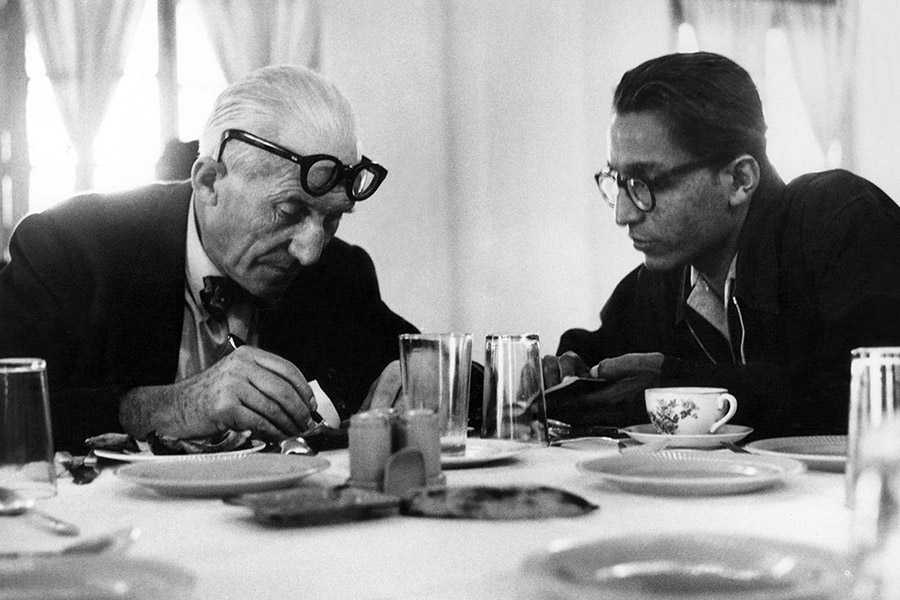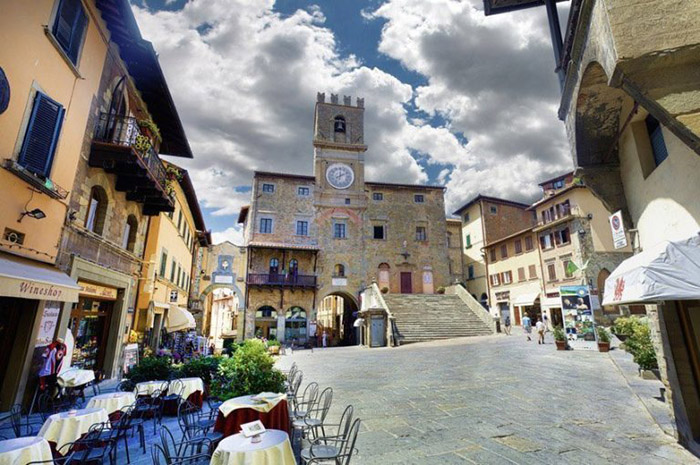INTRA-VIEWS: Jeff Hazard
"To me, the profession (architecture) is about making places better for the people who use them. " Jeff Hazard

Written by Guillermo Cebrian.
Inter implies between or among, whereas intra implies within (the profession). INTRA-VIEW with Jeff Hazard.
The dynamic of this exercise is the following: The architect selects one image of their choice and a brief description of their personal understanding of the profession. While the image serves more as a subjective expression, the introductory text is meant to convey a declaration of intention. Together, these two form a self-portrait that serves as an introduction or cover for the interview. The interview that follows is based on the text provided, the architect’s work and their area(s) of interest.
Brief description of their personal understanding of the profession:
To me, the profession is about making places better for the people who use them.
What were some insights from your years in London, specifically with respect to your experience with Reyner Banham?
Jeff Hazard (JH): I spent a year at University College, London in 1975/76. I audited a one-semester seminar led by Reyner Banham, a lauded historian, particularly of the beginnings of the Modern era in Architecture. He was an inspirational professor whose seminar discussions motivated me to be more cognizant of history in my work as an architect.
More Important to me, actually, was the opportunity to work with sculptor Henry Moore to design a sculpture garden and interpretive center near his studio. We visited his studio to see him at work and he sat in on our design critiques at the conclusion of project.
Ultimately though, the most important aspect of that year was the opportunity to travel – all over England, Scotland and Wales, much of Europe and even Egypt. The experience of seeing all of that great architecture and urban planning had a profound impact on the catalogue of precedents and examples in my head and made me a much more informed architect.
What architects/practices have had an influence on your work?
JH: Working with Kaplan McLaughlin Diaz in San Francisco for nine years had a big effect on how I think about the practice of architecture. The firm’s dedication to research, thoughtful programming and individualized design for each project, their aggressive approach to marketing and, perhaps most importantly, their willingness to allow me to manage major healthcare clients all provided important lessons for me.
Architects whom I admire and whose work is relatable in a South Dakota context include the likes of Lake I Flato, Renzo Piano and Robert Stern.
Apart from the conventional determinants such as program, form, and site, what are other factors driving the decision-making process for a project in its early stages?
JH: Significant for me are light – how natural light can enrich the experience of using the building, mission– determining the big thing the building needs to accomplish and how that translates into big ideas, inspiration – how the building can inspire its users to accomplish the mission, transformation – how the building can, in the case of an adaptive reuse or addition, do new and exciting things, sustainability – what we can do to strengthen the environment, context – how to respect a building’s context while trying to expand the realm of what is formally acceptable in South Dakota.
I also have an interest in exploring and defining the nature of an architecture of the high plains – what is unique about where we live and how that might be translated into form, rhythm, proportion, color, texture, etc.?
It’s often said that our society increasingly values the image of a (thing), rather than the (thing) itself. Do you detect this phenomenon in your architectural work? If so, how do you feel architects can accommodate/resist this notion?
JH: The focus on image is the result of ignorance of substance – an observer is unlikely to fully understand the substance of a building so, unavoidably, I think, one tends to overly rely on image. In our practice, however, once we begin working with a client to design their building substance takes center stage and, ultimately, an image is born of the substance.
With respect to South Dakota, where do you think the profession is heading? Be as abstract or specific as you’d like.
JH: I wish I knew. There does appear to be a trend toward firm fragmentation, which together with outside firms opening satellite offices here (when I was young, I remember maybe four or five firms in Sioux Falls, now there are at least a dozen) may have both positive and negative consequences for the profession and community.
This article originally appeared on the Blueprint South Dakota blog on January 29, 2019.
